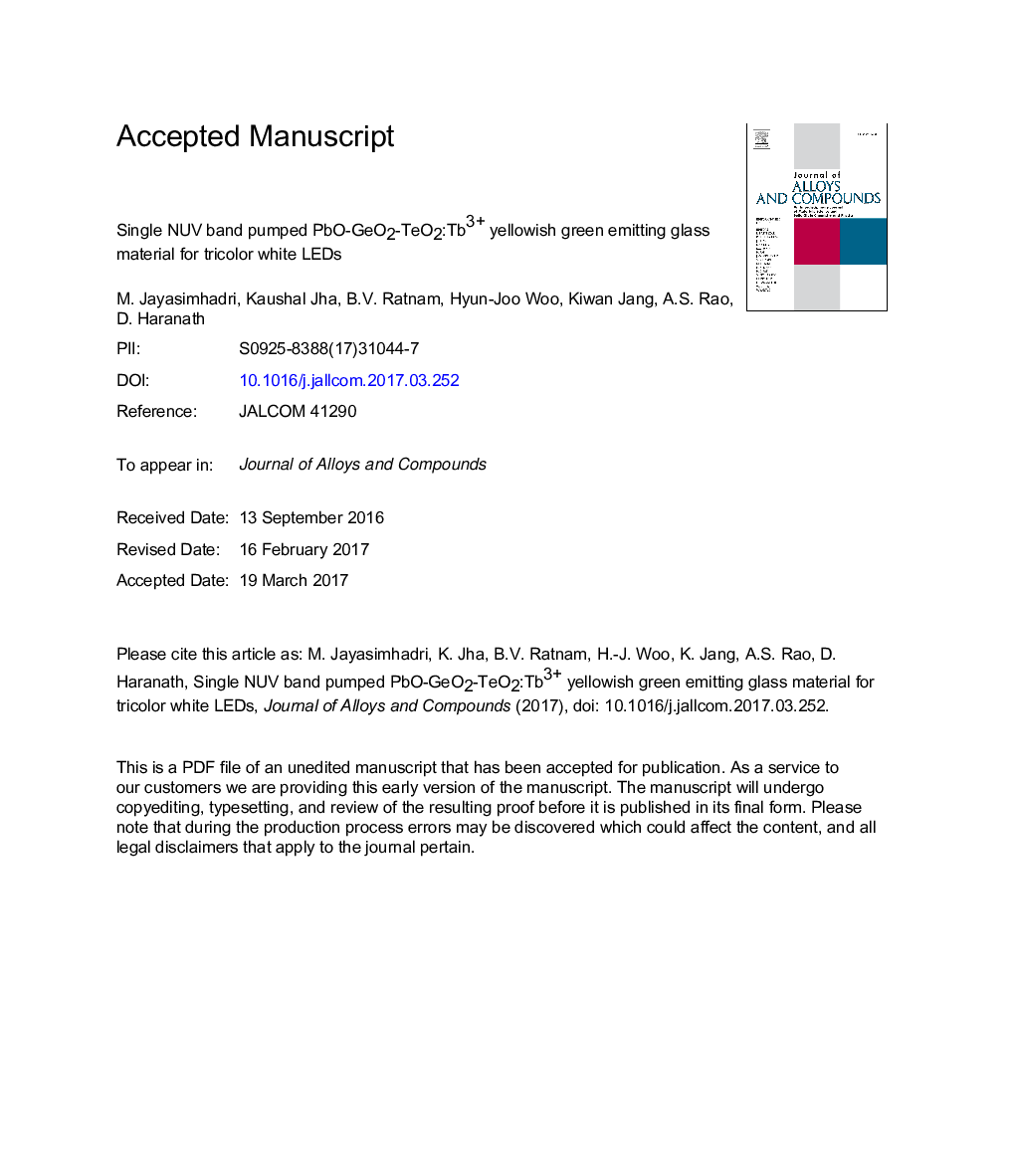| Article ID | Journal | Published Year | Pages | File Type |
|---|---|---|---|---|
| 5459272 | Journal of Alloys and Compounds | 2017 | 25 Pages |
Abstract
In this work, Tb3+ ions doped lead-germanate-tellurite (LGT) glasses were prepared by conventional melt quenching technique with different dopant concentrations ranging from 0.5 to 3.5 mol %. X-ray diffraction (XRD) and FT-IR analysis were carried out to analyze the structural properties of LGT glass. The excitation spectra revealed a single band centered in the NUV region at 380 nm by monitoring emission at 545 nm. The emission spectra consist of four bands, which are attributed to the 5D4â7FJ (J = 3-6) transitions. Among these transitions, the strong emission band was observed at 545 nm corresponding to the 5D4â7F5 transition and the optimized doping concentration of Tb3+ ions was 2 mol %. The Huang's theory and I-H model indicate the possibility of energy transfer via electric dipole-dipole interaction between Tb3+ ions. The CIE chromaticity coordinates were (x = 0.282 and y = 0.614) and emits intense yellowish green light. The decay curves measured for 5D4 level for the samples with different doping concentrations and the lifetime for the optimized sample was 548 μs. The results indicate that these glasses have potential applications in solid state lighting and display devices.
Related Topics
Physical Sciences and Engineering
Materials Science
Metals and Alloys
Authors
M. Jayasimhadri, Kaushal Jha, B.V. Ratnam, Hyun-Joo Woo, Kiwan Jang, A.S. Rao, D. Haranath,
